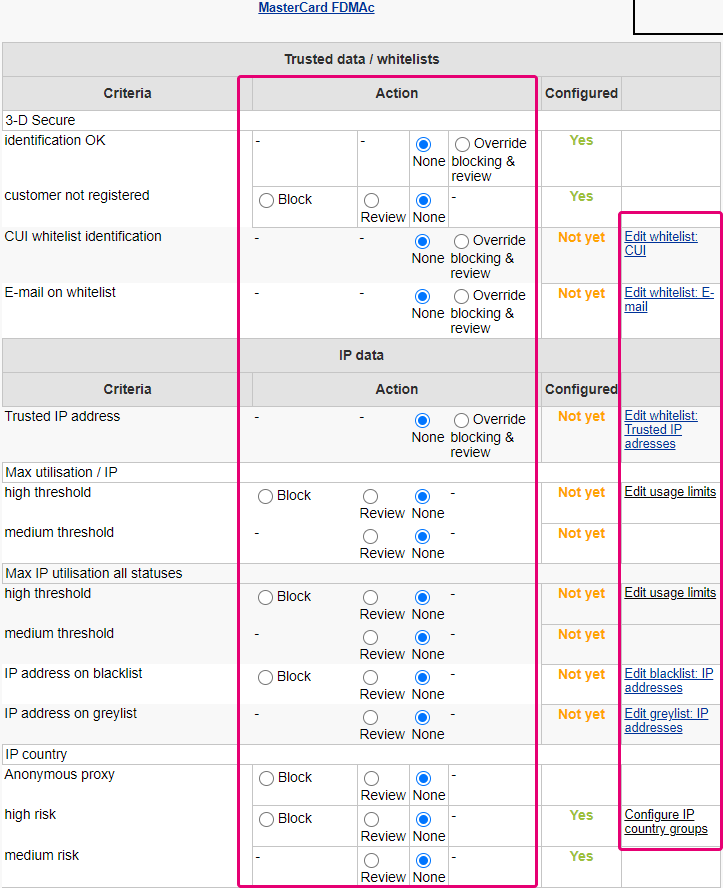Free Suggestions For Choosing Credit Card Apps
Wiki Article
What Are The Signs Of Suspicious Behaviors That Could Lead To Your Credit Card Being Blacklisted By The Bank?
A variety of behaviors or activities could trigger red flags and could be considered suspicious, potentially that could lead to a credit or debit card being flagged as suspicious or even blocked by the issuer of the card or a financial institution. A few examples of suspect behavior are: Unusual Spending Patterns-
A sudden large transaction or an rise in spending compared with the usual behavior of the cardholder can cause suspicion.
Unrecognized Transactions-
Fraud could be indicated by transactions that are not authorized or unauthorised on the account statement the cardholder is not able to initiate or authorized.
Multiple Declined Transactions-
A number of failed or declined transactions within a short period of time, particularly if a cardholder usually has a good track record of transactions might indicate a potential issue.
Geographic Anomalies
Transactions that are made in places far away from the usual areas of spending or multiple transactions that occur from various geographical locations in a short period can raise suspicion.
Abnormal Purchase Types
It is possible to flag suspicious purchases. This can include high-value purchases that do not fit to the typical spending patterns.
Uncommon Online Behavior
Unexpected online activity, such as multiple failed log-ins, changing account information or unusual attempts to login could signal unauthorised access.
Unusual Card Usage
If a credit card's typical use pattern is disrupted the card could be deemed suspicious. For instance, if the local credit card suddenly is used for international transactions.
Unexpected Cash Advances or Transfers
The cardholder might be notified when there are significant cash advances, transfers or other transactions that are uncommon for their spending habits.
Transactions that are frequently not authorised by a card
The unusually high volume of transactions (online, over the telephone or otherwise) with cards that are not present with previous experiences could lead to suspicion.
Identity Verification Issues -
The possibility of suspicion can arise when there are difficulties in confirming the identity of the cardholder, particularly in cases where additional verifications are required.
The card issuer can investigate such behavior and block the card temporarily if necessary until they can verify the identity of the cardholder as well as the legitimacy of the transaction.
What Is The Meaning Of My Credit Card Has Been Placed On A "Blacklist"?
A Blacklist's presence can hinder a card's usage or transactions until the issue is solved. There are a variety of reasons why a credit card may be put on blacklist.
Card blocked for security reasons If you suspect that your card is being used for fraud, your credit card could be canceled if the card detects unusual or suspicious transactions.
Security Issues: If there are any indicators of compromise (unauthorized access to data, breaches of cards, or abnormal spending patterns), the card can be tagged for security reasons.
Identity Verification Issues If you are having difficulty in proving the identity of your cardholders in transactions, especially when you require additional verification, the card may be temporarily blocked.
Lost or Stolen Card- If the card is reported lost or stolen by the cardholder, the issuer may put a stop on the card to stop any unauthorized use until a new card can be issued.
Suspicious Activities Indicators - Any activity or behavior which is linked to the card and could raise suspicion can trigger an immediate block. For instance, several declined transactions, geographic anomalies, or unusual spending patterns.
If a credit card is placed on a blacklist person who holds it will not be able to access credit, or the ability to use the card to make transactions could be restricted until the issuer determines the validity of the card or resolves any issues related to security or fraud. It is crucial that the cardholder contact the card issuer quickly to resolve issues, verify transactions and resolve potential security issues.

Cybersecurity Experts Identify And Monitor Cyber Threats, Such As Compromised Credit Cards.
Security experts use a variety of strategies, tools, and techniques to track and detect cyber-attacks, including compromised credit card data. The following are some of the more common methods.
Information from multiple sources, such as threat intelligence feeds, forums, dark web monitoring, and security advisory, to stay informed about the latest threats and weaknesses.
Network Monitoring & Intrusion Detection
Monitor network traffic using specialized software or tools. Detect anomalies or suspicious behavior that may indicate unauthorised entry or data breach.
Testing for vulnerability and penetrationVulnerability and Penetration Tests
Conducting periodic assessments to identify weaknesses. Penetration Testing involves simulating attacks to identify vulnerabilities and assess your organization's cybersecurity posture.
Security Information and Event Management (SIEM)-
Implementing SIEMs to analyze and aggregate log data (from firewalls as well as applications and servers) to identify, track, and react immediately to security breaches.
Behavioral Analytics-
The use of behavioral analysis is used to identify any patterns that are unusual, deviances or abnormalities from the typical user behaviours within systems or networks that may signal a potential security risk.
The threat of Hunting
The analysis of logs, system data and other data to identify potential threats which may be able to bypass traditional security measures.
Endpoint Security Solutions
Protecting individual devices and systems from malicious activities by using endpoint security products like antivirus, antimalware and even endpoint detector and response (EDR) tools.
Encryption, Data Protection and Privacy
Implementing encryption techniques to secure sensitive information, such as credit card data, both in transit and at rest, to minimize the threat of data security breaches.
Incident Response & Forensics
In order to react quickly to security breaches, incident response planning is essential. Conducting forensic analyses to identify and determine the extent of, the impact, and the source of security breaches.
Cybersecurity professionals combine these approaches and a deep understanding of cyber threats and compliance regulations, as well as best practices, to recognize and combat cyber-attacks. This includes incidents involving compromised information from cards. Cyber-attacks can be mitigated by a combination of continuous monitoring, information on threats, as well as proactive security. See the best savastan0 cvv for site info.

